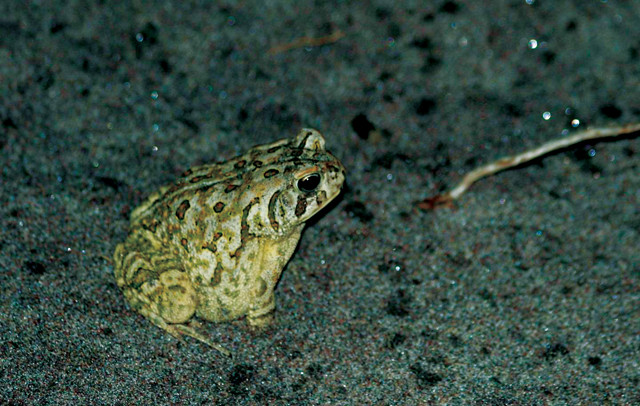
by Bethany Augliere Tuesday, October 18, 2016

Endangered Fowler's toads emerge in the spring earlier due to changing climate. Credit: David Green, McGill University.
Fowler’s toads — listed as endangered in Canada — hibernate for eight months to escape harsh winter conditions. They bury themselves up to a meter deep in the sand dunes along the shore of Lake Erie in Long Point, Ontario, which is the northern extent of their range. In May, they emerge at the surface to breed, in response to warmer air temperature and the lunar cycle. But scientists have now found that the toads are emerging earlier in the spring, according to a new study in Global Change Biology.
David M. Green of Redpath Museum and McGill University in Montreal, Canada, studied the toads for 24 consecutive seasons, from 1989 through 2012. He used weather records to model and predict the toads’ springtime emergence. Although Green found no trend linking climate change with emergence dates over the past three decades, when he extended the model back to 1876, he found a slight but significant trend toward earlier spring emergence today: about one and a half days per decade. Over that same time period, conditions at Lake Erie became wetter and warmer.
As the climate warms, scientists predict that frogs and toads will breed sooner in the spring, which studies have shown is happening already for species in Europe, Asia and North America. The Fowler’s toad may “conform to that expectation,” Green said in a statement.
© 2008-2021. All rights reserved. Any copying, redistribution or retransmission of any of the contents of this service without the expressed written permission of the American Geosciences Institute is expressly prohibited. Click here for all copyright requests.